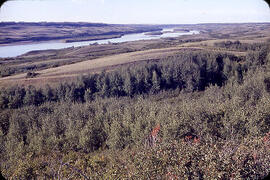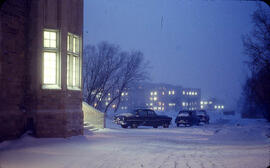The theory of drifting continents according the Wegener
- WOK 18-136
- Item
- [1964]
Part of W.O. Kupsch fonds
The theory of drifting continents according the Wegener. One protocontinent, Gondwanaland, existing through most of geologic time (A), but later broke into "blocks: (B), and "drifted" to their present positions (C). Dotted areas on continents are areas formerly covered by shallow seas. Zumberge, 1958, p. 65.


